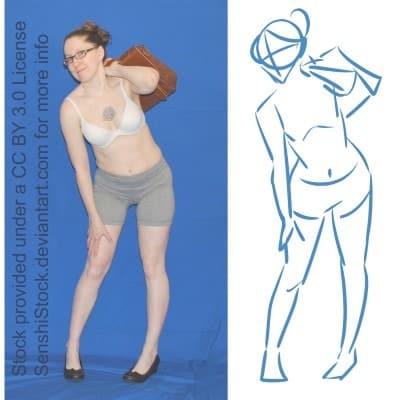Are you an aspiring artist wondering how many hours you should dedicate to drawing each day?
Well, we’ve got the answers you need.
In this article, we will explore the ideal drawing time for you.
By understanding the factors that influence your drawing routine, you can tailor it to suit your individual needs and goals.
Whether you have just one hour or several hours to spare, here’s how you can make the most out of your practice sessions.
Get ready to take your drawing skills to the next level!
Table Of Contents
How Many Hours To Be A Professional Artist
How many hours do you need to dedicate to your art to become a professional artist?
The answer to this question varies depending on many factors, such as your current skill level, dedication, and natural talent! However, one thing remains consistent – daily drawing is key.
To master any skill, you’ll need about 10,000 hours of consistent practice. And this is the same for art!
In general, you can become a professional artist with 2000 to 4000 hours of practice.
But if you want to keep leveling up your skills to a higher-paying job (or just for the sake of improvement), you’ll want to keep on practicing consistently.
To truly excel as an artist, you must draw a lot and commit to spending hours every day honing your craft. Through this consistent practice, you’ll see significant improvement in your skills.
While no set number of hours guarantees professional status, experts suggest dedicating at least 4-6 hours a day to your art, every single day.
But if you’re focused on the practice itself instead of the number of hours, you’ll improve even faster!
Focused Practice Helps You Improve Faster
You can improve faster by engaging in focused practice.

Here are three reasons why focusing on drawing practice is crucial for improving your drawing skills:
- Efficiency: When you dedicate a specific amount of time solely to drawing, you maximize the effectiveness of your practice. By eliminating distractions and honing in on your craft, you can make significant progress in a shorter period.
- Skill Development: Focused practice allows you to target specific areas for improvement. Whether mastering shading techniques or refining proportions, dedicating concentrated time to these skills will lead to noticeable growth.
- Consistency: Regular, consistent practice is key to seeing improvement in drawing. Committing to a focused drawing practice routine establishes a habit and creates a conducive environment for growth.
So with focused practice you can cut those hours of practice required to be a professional artist (or just to be a better artist) quite significantly!
Is 3 Hours A Day Enough To Practice Drawing?
Three hours a day may be sufficient for practicing drawing, but it ultimately depends on your dedication and focus during that time.
As I’ve mentioned before, if you truly want to improve your art and learn to draw, it’s essential to make drawing a daily habit.
Consistency is key.
While a larger amount of hours should get you to the art skill level you want faster, you must find a good balance for your routine.
Pushing yourself too hard will cause you to burn out and/or enter a creative art block.
What Happens If You Draw Everyday?

Drawing every day can profoundly impact your drawing skills and overall artistic growth.
By establishing a daily drawing routine, you can improve the quality of your drawings and develop a habit of drawing that will benefit you in the long run.
It will keep your mind sharp and allow you to see significant progress from day to day!
Don’t forget to stretch yourself and your hands, and relax between drawing sessions though.
Benefits Of Drawing Everyday
Here are some benefits of drawing every day:
- Improved Creativity
- Better Problem-Solving Skills
- Expands Your Skill Set
- Increase Love Of Drawing
If you draw every day, you’ll experience the benefits of improved creativity and problem-solving skills.
Consistent practice with a sketchbook in hand will make you better at drawing and enhance your ability to think outside the box and find innovative solutions.
Engaging in figure drawing exercises and taking on drawing challenges will push your artistic boundaries and expand your skill set.
Not only that, but the more you practice, the more you’ll enjoy drawing, as it becomes a natural part of your daily routine.
Is Drawing Good For The Brain?

Drawing benefits your brain because it stimulates creativity and improves cognitive function(1). When you engage in regular drawing sessions, you can enhance your art skills and experience various benefits.
Here are three reasons why drawing every day is worth your time:
- Boosted Creativity: Drawing is a skill that allows you to tap into your imagination and think outside the box. By consistently practicing drawing, you can unlock your creative potential and develop innovative and cute drawing ideas.
- Improved Cognitive Function: Drawing requires focus, attention to detail, and problem-solving skills. Regular drawing sessions can enhance your cognitive abilities, such as memory, concentration, and spatial awareness.
- Progress and Growth: Drawing every day will make you improve over time. By dedicating even just an hour a day to drawing, you can see significant progress in your artistic abilities. With this artistic growth you’ll become happier and enjoy your new skills even more.
So in general, yes, drawing is very good for the brain!
What Should I Draw Everyday?
If you’re looking to improve your artistic skills, consider drawing something new and challenging every day.
You can start by drawing something that you enjoy drawing and is in your comfort zone. Such as fan art of your favorite character, drawing different eyes or even drawing some lips!
But after that, you should consider drawing something outside your comfort zone.
If you’d like some suggestions, check out these 7 Difficult Things To Draw!
By consistently pushing yourself, you’ll be able to improve much faster.
Remember, finding your ideal drawing time and subject will depend on your goals!
Some artists will love drawing several hours per day every single day, others will hate it and will improve faster by drawing less often.
See what works for you and have fun with the entire process!
For more drawing ideas, check out these 23 Easy Drawing Ideas.
And as always,
Keep on drawing!
Patricia Caldeira is the main writer here at Don Corgi. She's an art teacher with over 20.000 happy students across many platforms and courses!
Enjoy your stay and as always:
Keep on drawing!



